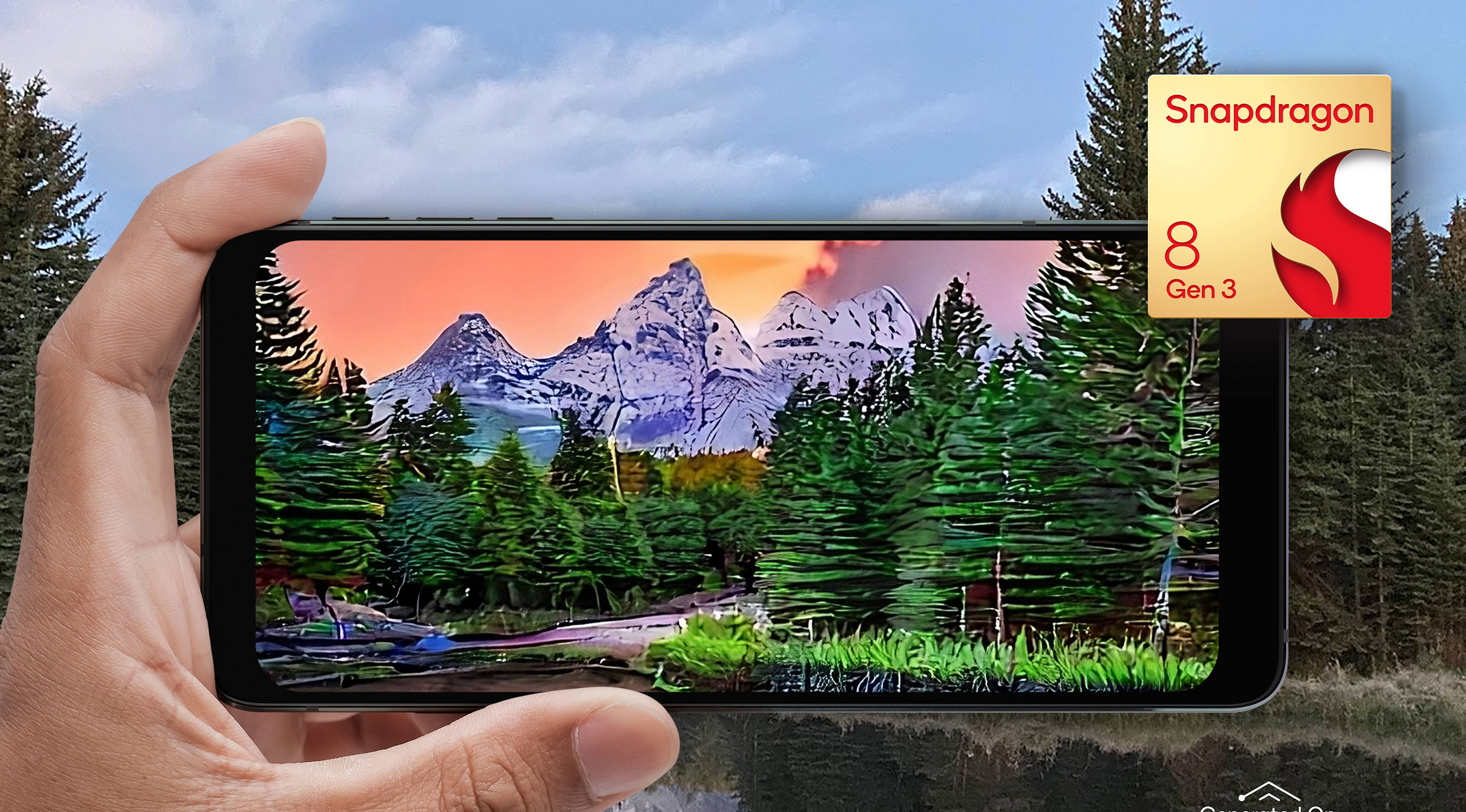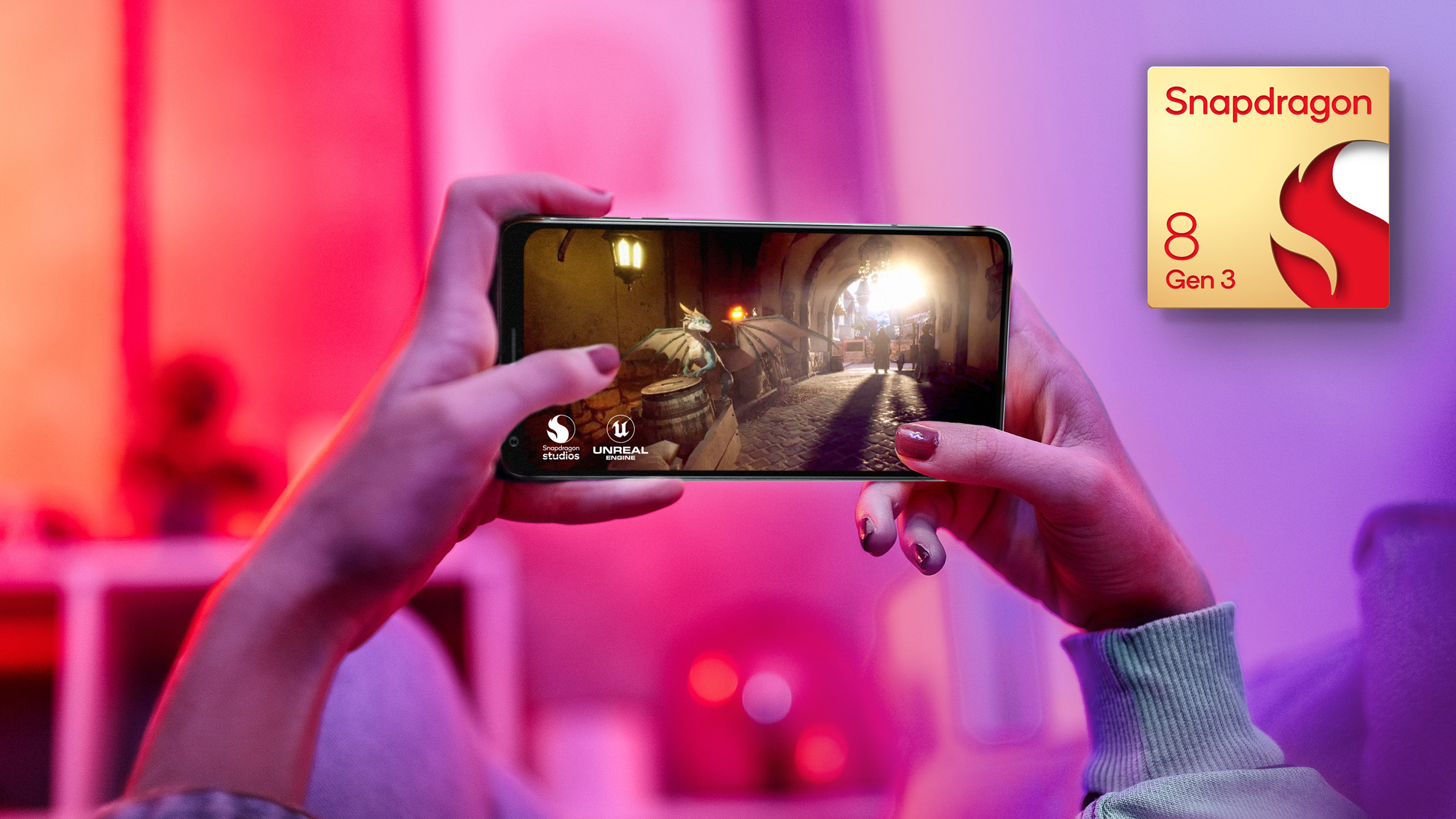Qualcomm Snapdragon 8 Gen 3: Everything you need to know
Qualcomm's 2024 flagship platform is all about AI.

Qualcomm announced the Snapdragon 8 Gen 3 at its annual Snapdragon Summit in Hawaii, and there's plenty to like. Just like Google's Tensor G3, the Snapdragon 8 Gen 3 is all about integrating generative AI on-device, and to that effect, the platform includes text-to-image AI models, video object editor similar to what you get on the Pixel 8 and 8 Pro, significant changes to the ISP that lets you take much better photos and videos, and gaming tweaks.
The Snapdragon 8 Gen 3 will make its way to the best Android phones of 2024, starting with the Xiaomi 14 series. Xiaomi has been the first to announce phones based on Qualcomm's latest platform for a few years now, but its Chinese rivals aren't far behind; we should see the initial wave of devices debuting in China in November, with global availability kicking off at the end of 2023.
There's clearly a lot to get to with the Snapdragon 8 Gen 3, so let's take a look at all the new features, and what's in store for Android flagships next year.
AI everywhere

You can't go two seconds in the tech industry without someone bringing up AI, and that's been the case with chip vendors as well. Google made AI-assisted features the biggest differentiator on the Tensor G3, and Qualcomm is following suit with the Snapdragon 8 Gen 3. The chipset debuts the latest version of Qualcomm's AI Engine, and it works with multi-modal generative AI models — including large language models (LLM) and language vision models.
Qualcomm is making a lot of claims about the AI Engine; it's touted to be the fastest at Stable Diffusion, generating images from text queries in just a second. Text prompts are just one way Qualcomm is adding generative AI to the mix; you can also use voice prompts, and use an existing image and make changes to it. The engine is able to handle up to 10 billion parameters, run up to 20 tokens a second in LLM models like Meta's Llama 2, and the Sensing Hub is 3.5 times faster than what we got last year.
The Hexagon NPU is also picking up sizeable gains, and is 98% from last year and is 40% more efficient when running the same workloads. What does all of this power mean in daily use cases? Well, Qualcomm is introducing the ability to use generative AI to alter the background of images, add entirely new elements via a predictive pixel feature, and remove any objects from videos — which is similar to Magic Eraser on the Pixels.
There's clearly a lot on offer here, and it will be down to individual device makers to leverage the new AI Engine.
More power than you'll need

Although Qualcomm went with a 4 + 4 core configuration in the past, it switched things up following the introduction of the Cortex X cores, opting to go with a 1 + 2 + 2 + 3 configuration. There's yet another change in this area with the introduction of the Snapdragon 8 Gen 3, which uses a 1 + 5 + 2 configuration that sees the inclusion of a single prime core — a 3.3GHz Cortex X4 — along with five dedicated performance cores going up to 3.2GHz, and just two efficiency cores that go up to 2.3GHz.
Basically, Qualcomm is limiting the number of efficiency cores while increasing the performance cores with this generation, and that's an interesting choice to say the least. You also get the latest Arm v9.2 cores throughout, with the Cortex X4 joined by the Cortex A720 that does the heavy lifting, and the Cortex A520 efficiency cores.
Unlike the A 17 Pro — which is built on TSMC's latest 3nm node — the Snapdragon 8 Gen 3 is still using the 4nm node. However, going with an established node gives Qualcomm the ability to get the most out of the process, and that's what it is doing here. To that effect, it is touting a 30% increase in performance over the Snapdragon 8 Gen 2, and 20% better efficiency with the same workloads.
That's nothing to scoff at, particularly when you consider how fast the 8 Gen 2 is in daily use. Connectivity is also getting a decent boost with the introduction of the Snapdragon X75 5G modem, and it has a few nifty features to optimize battery life over 5G. Similarly, the FastConnect 7800 system has Wi-Fi 7 with 4K QAM, and there's Bluetooth 5.4, LPDDR5X memory with up to 24GB, and the usual slate of Qualcomm audio codes.
I'll have more to share in this area once I get my hands on devices featuring the Snapdragon 8 Gen 3, so stay tuned.
Unlock a new level of gaming

Gaming is always a key area of focus for Qualcomm, but it's also something most manufacturers ignore. The Snapdragon 8 Gen 3 uses the latest-gen Adreno GPU, and it is picking up huge upgrades: it is 25% faster and uses 25% less power, and 40% faster at ray tracing. It's another matter that there aren't many titles that can utilize ray tracing on Android, but if game makers decide to roll out the feature, the hardware won't be a bottleneck.
A big addition this year is Adreno Frame Motion Engine 2.0, a frame generation algorithm that automatically generates frames in select titles. If that sounds familiar, it's because NVIDIA does something similar with DLSS 3.5 on its video cards. You also get Unreal Engine 5's Lumen global illumination and reflections system, and it should make visuals look life-like in demanding titles — provided game makers leverage it.
To round things off, the latest-gen Adreno facilitates 240fps gaming when connected to an external 1080p monitor. Of course, your ability to play games at anywhere close to those framerates is entirely reliant on device manufacturers, and they've been conservative in this area.
ASUS is the only brand that is consistently working to enable high framerate gaming on its devices, and while Samsung doesn't limit framerates in most titles, that isn't the case with Chinese brands. All Chinese manufacturers lock gaming to 60fps, so even though you have the potential to play at 240fps, you miss out on that if you use a device from Xiaomi, OPPO, Vivo, Realme, and OnePlus.
Cameras get a big boost

Qualcomm updates its Spectra ISP with every new generation, and that's no different with the Snapdragon 8 Gen 3. You get exciting changes to semantic segmentation — which lets you blur backgrounds in portrait shots — and Night Vision video that now uses a serving of AI to take better videos in little to no lighting.
What's particularly great is the introduction of Dolby HDR photos, which should deliver a wider dynamic range and color gamut in any scenario. Qualcomm also touts changes to zoom when using the likes of Samsung's 200MP imaging module, tweaks to its always-sensing tech for face unlock, and a Vlogger’s View that lets you record video from the front and rear cameras at the same time.
Photo Expansion is a cool new feature that uses generative AI to extend the background of a photo, so if you take a tight shot, you can use the feature to create a wider image. As with gaming, it's down to manufacturers to decide what features they leverage in their devices, so we'll have to wait and see to get a better understanding of what's actually usable on 2024 phones.
Get ready to see the Snapdragon 8 Gen 3 soon
With Xiaomi launching the Xiaomi 14 series in China imminently, we don't have to wait long to see what's in store with the Snapdragon 8 Gen 3. Other devices will follow suit over the coming weeks, with Qualcomm noting that ASUS, Honor, iQOO, MEIZU, NIO, Nubia, OnePlus, OPPO, Realme, Redmi, RedMagic, Sony, vivo, Xiaomi, and ZTE will roll out devices based on its latest platform. Samsung is never included in this list, but you can be sure that the Galaxy S24 series will leverage the Snapdragon 8 Gen 3.
Get the latest news from Android Central, your trusted companion in the world of Android

Harish Jonnalagadda is Android Central's Senior Editor overseeing mobile coverage. In his current role, he leads the site's coverage of Chinese phone brands, networking products, and AV gear. He has been testing phones for over a decade, and has extensive experience in mobile hardware and the global semiconductor industry. Contact him on Twitter at @chunkynerd.
